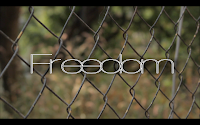 The BBC is one of the front runners in airing documentary programs in the UK. It generally deals with serious and thoughtful topics. This suggests the target audience could be educated and informed people, however they are well known for producing and distributing a huge variety of documentary programs ranging from David Attenborough nature documentaries to programs like Panorama or Charlie Brooker's Screenwipe.
The BBC is one of the front runners in airing documentary programs in the UK. It generally deals with serious and thoughtful topics. This suggests the target audience could be educated and informed people, however they are well known for producing and distributing a huge variety of documentary programs ranging from David Attenborough nature documentaries to programs like Panorama or Charlie Brooker's Screenwipe.
History of BBC
John Reith (1889-1971) was the founder of the BBC. He was its first General Director when it was set up as the British Broadcasting Company in 1922 and he was its first Director General when it became a public corporation in 1927. Reith fought off the politicians' attempts to influence the BBC, while offering the British people programmes to educate, inform and entertain.
This idea to educate, inform and entertain is one that is very important in particular with my documentary film as I want it to educate and inform the audience to what this concept of 'Freedom" means to the people in India but also to entertain them so that they are drawn into the story and want to continue watching and don't change channel to something else.













